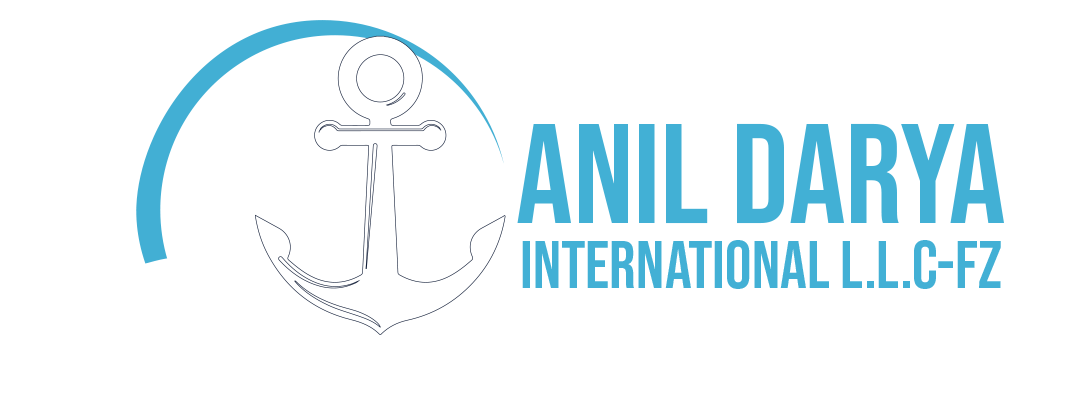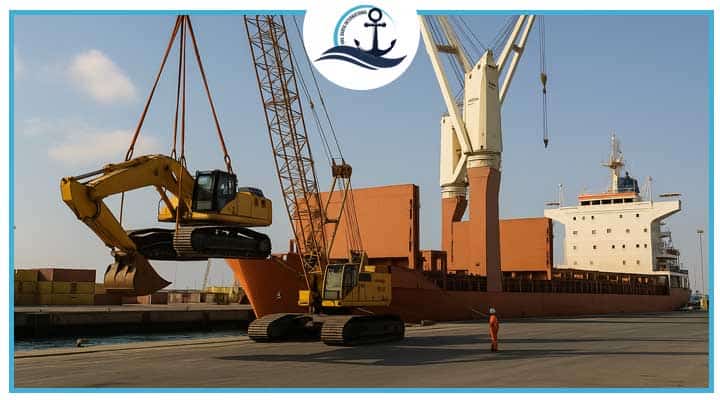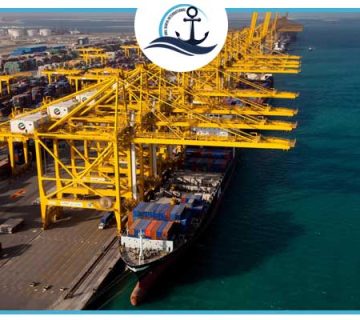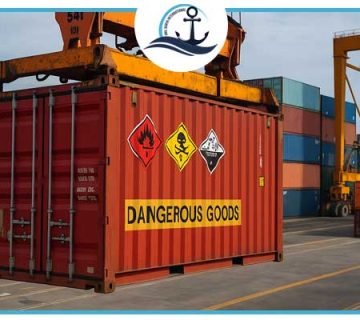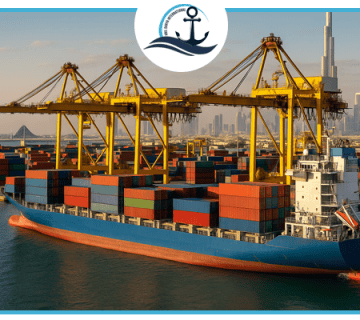|
Getting your Trinity Audio player ready...
|
How to Minimize Damage in Break Bulk Shipping: Packaging, Handling & Storage
In global logistics, break bulk shipping remains one of the most demanding and technically complex modes of sea transport — especially in the UAE, where Dubai’s Jebel Ali Port handles a diverse range of industrial and project cargo every day. From massive turbines and steel coils to construction machinery and heavy vehicles, each piece is loaded, lashed, and unloaded individually.
While this method offers flexibility for cargo that cannot fit inside standard containers, it also increases the potential for damage during transit.
Whether it’s impact during crane lifting, corrosion from Dubai’s coastal humidity, or insufficient packaging during long storage, every weak link in the chain can translate into substantial losses.
That’s why understanding how to minimize break bulk cargo damage through proper packaging, handling, and storage strategies is critical for shippers, importers, and forwarders alike.
Understanding Why Break Bulk Cargo Is More Prone to Damage
Unlike containerized cargo, break bulk items are exposed at nearly every stage of their journey — from loading at the shipper’s yard to discharge at the destination port. There’s no standardized box to protect the goods, and each unit requires custom loading and lashing.
When the cargo passes through multiple handling points, the likelihood of impact, friction, and weather exposure multiplies.
Dubai’s port operations are efficient and well-equipped, but even within this advanced ecosystem, cargo vulnerability remains a real concern due to the nature of open-deck operations, mechanical lifting, and regional climatic conditions.
Some of the most common causes of damage include:
- Improper weight balancing during lifting.
- Inadequate securing or lashing on deck.
- Insufficient moisture protection (especially during summer humidity).
- Poor surface preparation before applying protective covers or coatings.
Even small cracks or rust spots can grow into significant financial losses — and that’s where preventive planning becomes more valuable than insurance itself.
The Importance of Strategic Packaging in Damage Prevention
Packaging is not just about wrapping; it’s the first line of defense against mechanical and environmental hazards.
For break bulk cargo, packaging must be tailored to the cargo’s material, dimensions, weight, and sensitivity.
In Dubai, where break bulk handling is routine across Jebel Ali, Hamriyah, and Port Rashid, companies like Anil Darya Shipping LLC provide specialized cargo packaging services designed for desert climate and long sea transits.
Some of the key packaging practices include:
- Custom Crating and Palletization Wooden or steel-reinforced crates absorb vibration and protect sharp edges during crane handling.
- Anti-Corrosion Coatings Applying rust inhibitors and shrink-wrap films prevents oxidation, especially for metals and machinery.
- Vacuum Sealing For electronic and precision equipment, vacuum wrapping prevents moisture condensation.
- Shock Indicators & Tilt Sensors Used to monitor accidental mishandling during transportation or port movement.
Each of these solutions forms part of Anil Darya Shipping’s integrated cargo protection program, which ensures compliance with both IMO (International Maritime Organization) and UAE port safety standards.
By investing in professional packaging, shippers can cut damage claims, insurance costs, and downtime — protecting their reputation and supply chain integrity.
Handling: Precision and Supervision at Every Stage
Even the most robust crate can fail if the handling process is careless.
Handling is the most critical phase in preventing break bulk cargo damage, because it involves human judgment, machinery precision, and environmental coordination.
Modern Dubai ports have advanced infrastructure: heavy-lift cranes, adjustable spreader bars, and digital load sensors.
However, damage still occurs when untrained operators fail to consider the center of gravity or apply uneven tension while lifting or lowering the load.
That’s why Anil Darya Shipping places such strong emphasis on supervised handling operations. Their technical team works directly with port stevedores to ensure proper:
Lifting Gear Selection
Each cargo type requires a specific sling, hook, or beam.
Load Balancing Plans
3D modeling and load-plan simulations reduce human error.
Lashing & Dunnage
Proper securing methods prevent cargo from shifting during sea transit.
Weather Assessment
High wind or rain can delay loading to ensure safety.
In recent years, IoT and AI-based cargo monitoring tools have become increasingly common in Dubai’s logistics hubs. These allow live tracking of pressure points, tilt angles, and shock events — giving forwarders real-time data to detect mishandling instantly.
This technological integration, already part of Anil Darya Shipping’s operational framework, reflects the company’s commitment to smart logistics in the UAE.
Storage Practices: Protecting Cargo Before and After the Voyage
One of the most underestimated causes of break bulk damage is improper storage at origin or destination.
Cargo often sits at staging yards, warehouses, or free-zone terminals for days — exposed to weather, dust, and salt in the air.
In Jebel Ali Free Zone (JAFZA) and Dubai Logistics City, proper storage is not optional; it’s a regulatory expectation.
To minimize deterioration:
- Heavy cargo should rest on elevated pallets or steel skids to avoid contact with ground moisture.
- Ventilated and covered warehouses help control humidity and temperature fluctuations.
- Sensitive machinery should be stored with desiccant packs or VCI film.
- Segregation by cargo type (hazardous, heavy-lift, or sensitive goods) ensures safety and compliance with IMDG Code requirements.
At Anil Darya Shipping’s partner storage facilities, these standards are implemented consistently.
Whether the cargo is awaiting re-export, on-forwarding, or customs inspection, the goal remains simple: to preserve its original condition.
This focus on pre-shipment and post-shipment care directly contributes to Dubai’s reputation as a global hub for reliable break bulk logistics.
Documentation, Inspection & Insurance – The Final Layers of Protection
While packaging and handling address the physical aspects of cargo protection, documentation and insurance handle the financial side of damage prevention.
Every step must be backed by traceability and accountability.
A complete pre-loading survey (including photos, condition reports, and packing lists) acts as a baseline reference in case of claims.
Anil Darya Shipping integrates these inspections into every project, ensuring all cargo is photographed and documented before vessel loading.
Additionally, the company coordinates marine cargo insurance coverage based on the cargo’s type and voyage risk level.
This includes policies for All Risks, Total Loss, and Particular Average, depending on client preference.
Having a clear Bill of Lading (BL), correct HS codes, and consistent cargo description not only reduces disputes but also prevents customs delays at UAE or destination ports.
For specialized cargo — including dangerous goods (DG) or items requiring IHM (Inventory of Hazardous Materials) certification — Anil Darya’s compliance experts ensure full alignment with UAE regulations, IMDG Code amendments, and the Dubai Code of Practice for DG handling.
Leveraging Dubai’s Infrastructure for Safer Break Bulk Logistics
Dubai is more than just a trading hub; it’s an ecosystem designed for multimodal, high-value, and heavy-lift logistics.
The synergy between sea, air, and land transport provides unmatched connectivity for break bulk cargo.
At Jebel Ali Port, specialized terminals offer high-tonnage cranes, reinforced quays, and storage yards for project cargo.
When integrated with Dubai Logistics City’s air-freight connectivity, it becomes possible to combine sea-air or door-to-door solutions, further minimizing cargo transfers and handling — and therefore reducing the chance of damage.
Anil Darya Shipping has long been active within this network, offering clients customized multimodal shipping plans that link sea freight, air freight, and inland trucking.
By keeping operations centralized, they minimize the “touchpoints” that typically increase the risk of break bulk cargo damage.
For instance, a shipment arriving from Europe or Asia can be directly offloaded at Jebel Ali, stored in a bonded free-zone warehouse, then reloaded to a vessel bound for Africa or the Americas — all managed under a single logistics supervision plan.
Those interested in learning more about how multimodal freight improves safety can explore Door-to-Door Freight Solutions from Dubai, another detailed insight from Anil Darya.
Sustainability Meets Safety
Minimizing cargo damage isn’t just about saving money — it’s a key component of sustainable logistics.
Every damaged unit means re-production, re-shipment, and more emissions.
By reducing losses, companies contribute directly to the UAE’s 2050 Net Zero vision.
Anil Darya Shipping integrates this sustainability mindset into operations through:
- Reusable packaging solutions (steel frames, recyclable wrapping).
- Optimized load planning to reduce waste.
- Energy-efficient equipment during loading and warehousing.
- Eco-compliant disposal of damaged materials and dunnage.
Thus, damage prevention becomes not just an operational objective but an environmental commitment.
The Anil Darya Advantage
What differentiates Anil Darya International L.L.C-FZ from other freight forwarders in Dubai is not just experience — it’s precision and accountability.
The company has built its reputation on customized cargo protection programs for break bulk, bulk, dangerous goods, and project shipments.
Key advantages include:
- On-site supervision during every loading/unloading operation.
- Access to certified packaging and lashing materials.
- Collaboration with port authorities for cargo clearance and safety inspection.
- 24/7 tracking and communication for international shipments.
Whether your cargo is bound for Africa, Asia, or South America, Anil Darya Shipping ensures each piece arrives exactly as it departed — secure, compliant, and undamaged.
If your business relies on break bulk cargo shipping through Dubai, don’t leave safety to chance.
Protect your investment with proven damage-prevention strategies, professional packaging, and expert supervision.
Our team of specialists in break bulk, heavy lift, and dangerous goods shipping will guide you through every stage — from packaging design to on-site inspection and delivery confirmation.
Every cargo has a story. Let yours arrive safely, on time, and damage-free.
Frequently Asked Questions (FAQs)
The majority of cases stem from incorrect handling, poor packaging, or weather exposure during loading or storage. Preventive steps — such as load balance calculation, corrosion control, and proper lashing — can eliminate 80% of these issues.
High-quality materials like heat-treated wood, VCI films, and vacuum sealing protect against vibration, impact, and moisture — essential in Dubai’s humid climate.
Yes. Even with perfect operations, unforeseen events like storms or equipment failures can occur. Comprehensive insurance ensures compensation and peace of mind.
Through trained stevedores, certified equipment, and direct supervision at ports. The company also integrates IoT sensors and load tracking for real-time monitoring.
Free zones offer climate-controlled warehousing, bonded storage (no immediate duty), and easy re-export options. They also simplify customs procedures and reduce transit times.
Yes, but under strict IMDG compliance. Proper labeling, segregation, and certification are mandatory. Anil Darya Shipping handles DG cargo safely across all UAE ports.
Damage prevention reduces material waste, re-shipment, and carbon footprint — aligning logistics operations with Dubai’s green shipping initiatives.
